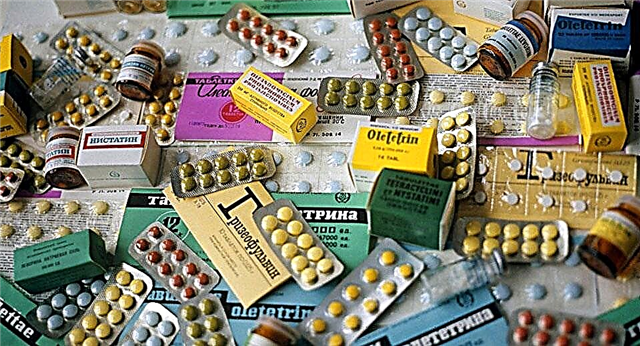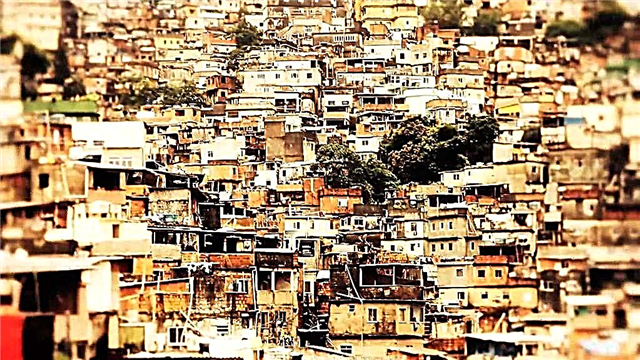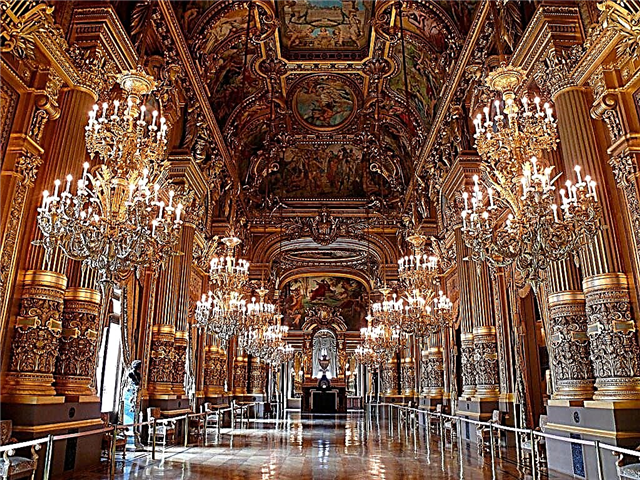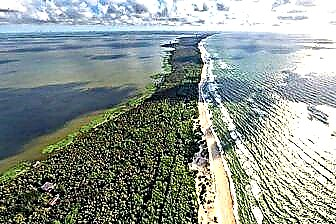Kaliningrad is perhaps one of the most interesting Russian cities. Until 1945, it was the center of East Prussia, quite a European capital with a characteristic architecture and lifestyle. Much has survived from those times: Catholic cathedrals, buildings in the German Art Nouveau (Art Nouveau) style, fortifications and, of course, the seven famous city gates.
Kaliningrad makes an ambiguous impression on tourists. On the one hand, there are European facades, on the other, typical Soviet high-rise buildings, spoiling the historical architectural appearance. On the one hand - the picturesque Curonian Spit and the Kant Island, on the other - the unsightly working outskirts. In any case, the tourist potential of the city is enormous, so there is room for development and something to surprise future travelers with.

The best hotels and hotels at affordable prices.
from 500 rubles / day
What to see and where to go in Kaliningrad?
The most interesting and beautiful places for walking. Photos and a short description.
Curonian Spit
A narrow strip of land separating the Baltic Sea from the Curonian Lagoon. The isthmus is about 100 km long and stretches from Zelenogradsk to Klaipeda (Lithuania). In different places, the width of the Curonian Spit ranges from 400 to 3800 meters. This is a unique natural area with sand dunes, pine trees, picturesque sea (unfortunately, almost always cold) and wonderful air.

Koenigsberg castle
Königsberg Castle was founded in the 13th century and existed until 1968. In the Middle Ages, it belonged to the knights of the Teutonic Order; at a later time, public institutions of East Prussia were located on its territory. Unfortunately, nothing remained of the fortress. Now in its place is a museum - an observation deck, where excavations are underway. It is believed that it was in this castle that the legendary Amber Room was located.

Fishing village
Quarter, decorated in the style of the old Königsberg, consisting of stylized German houses. The place is a craft and ethnographic center, which tourists consider one of the main city attractions. Here you can see Gothic turrets, bridges and facades of city houses characteristic of German architecture. The construction began in 2006.

Amalienau
One of the districts of the former Königsberg, formed around a noble estate. At the beginning of the 20th century, it was located outside the city limits. Famous Prussian architects took part in the development of the streets, who designed most of the buildings in the Art Nouveau style. The area is mostly built up with villas from the beginning of the 20th century (many of them are in desperate need of restoration), mixed with post-war Soviet buildings.

Cathedral
The temple is located in the historical center of Kaliningrad (the modern name of this area is the island of Kant). Its history began in the XIV century, from the XVI century it became the main Protestant cathedral of the city. The building is built of bricks in the Baltic Gothic style and is a valuable architectural monument. In the 1990s, restoration was carried out, after which a cultural and religious center was located inside.

Tomb of Immanuel Kant
The famous philosopher and writer I. Kant was born and died in Königsberg. He is buried at the north wall of the cathedral. Until 1924, a small chapel stood over his grave, later it was replaced by a more impressive memorial on a granite pedestal with a stone colonnade. The tomb is often visited by fans of the thinker's creativity, who come to Kaliningrad from different countries.

Cathedral of Christ the Savior
Cathedral of the Russian Orthodox Church, built in 2006. It has quite impressive dimensions and reaches 51 meters in height. The building was erected in the style of Vladimir-Suzdal architecture with small inclusions of modern design according to the project of the architect O. Kopylov. The temple stands on the central Victory Square (formerly Hanseatic), where the Triumphal Column and fountains are also located.

Church of the Sagrada Familia
Former Catholic church of the early XX century, built in the neo-Gothic style according to the project of F. Heitmann. During the war, the building was badly damaged. It continued to collapse, as no one was going to be involved in its reconstruction. But everything changed after it was decided to place the Kaliningrad City Philharmonic Society here. Today the former church is in good condition, so tourists can admire its picturesque architecture.

Holy Cross Cathedral
Orthodox church, which is located in the building of the former Lutheran church. It was built in the 1930s, when Königsberg was still part of East Prussia. The original building style can be defined as Art Nouveau with a touch of neoclassicism and gothic. During the war, the building was almost not damaged, in subsequent years it was used for household needs. In 1986, the church was transferred to the Orthodox community.

Museum of the World Ocean
A modern museum dedicated to the marine world, shipping, geology and ecology of the World Ocean. Part of its exposition is in the open air. These are mainly ships, deep-sea vehicles, equipment. Inside there are paleontological, natural science and art collections. There is also a shipyard, a library and an ecological station.

Submarine Museum "B-413"
One of the exhibits of the Museum of the World Ocean. In the 1960s and 90s, this submarine served in the Northern Fleet and made several long voyages to the Atlantic Ocean and the Mediterranean Sea. Since 2000, it has hosted a museum exposition, which has been recognized as one of the best in Russia according to the TripAdvisor travel portal. The collection is dedicated to the history of the Russian submarine fleet.

Research vessel "Vityaz"
The main exhibit of the Museum of the World Ocean. The vessel was built in Germany at the Shihau shipyard. Before starting service in the USSR Navy, it managed to fly under the flag of Great Britain and changed its name several times. Since 1949, the "Vityaz" has been the most important research ship of the Institute of Oceanology. P. Shirshova. He made several dozen research expeditions.

Amber Museum
The museum was created in 1979 on the territory of the Don Tower - a German defensive structure of the mid-19th century. The exposition is a collection of items made of amber and the mineral itself in its various forms and colors. Some of the items are real masterpieces. Unique exhibits of the past centuries are of particular interest. The museum building is also of considerable cultural interest.

Museum "Bunker"
The exposition occupies a former German bomb shelter in 1945, most of it is dedicated to the storming of Königsberg, which took place a month before the end of the war. In those days, the command post of General O. Lyash was located here. The bunker lies at a depth of 7 meters, its length is 42 meters, width is 15 meters, it consists of 21 rooms. The museum opened here in 1968. For tourists there are guided tours in two languages: Russian and German.

History and Art Museum
The main branch of the museum is located in a building built in 1912, which is located in the central part of Kaliningrad. The exposition opened in 1946. Today, tourists can visit five thematic halls: history of the region, archeology, nature, war and Horizons of Memory. Each department contains collections dedicated to the history and culture of the region from the most ancient period to modern events.

Kaliningrad Regional Drama Theater
The theater troupe has existed in Kaliningrad since 1947.In 1960, the stage moved to a classical architecture building that previously belonged to a German theater. The modern repertoire consists of the immortal works of classical authors. Since the 1980s, the collective has taken part in many festivals, where actors demonstrate their high professionalism and skill.

Königsberg Stock Exchange building
The building was built in the 1870s according to the project of the Bremen architect G. Müller in the neo-Renaissance style. In addition to its main purpose - holding auctions, it was often used as an exhibition and concert hall. After the war, the building was in a deplorable state for a long time, almost in ruins. The reconstruction was carried out only in the 1960s, while retaining its original appearance.

Fort number 5 - King Frederick William III
Fortification of the late 19th century, built to protect Königsberg. It was named after Frederick Wilhelm III, one of the Prussian kings. Today it is a hexagonal structure of concrete and brick, stretching 215 meters in length and 105 meters in width. During the storming of the city in 1945, the fort was badly damaged. Today, an exposition is located on its territory, and historical reconstructions are underway.

Friedland gate
The neo-Gothic gate, one of the seven surviving structures of this type in Kaliningrad. It is assumed that they were erected in the period 1857-1862 by an unknown architect. Since 1956, a museum has been located on the territory of the gate, which until 2002 did not have an official status. Its exposition is dedicated to the history of Koenigsberg in the 19th-20th centuries.

Brandenburg Gate
Another city gate of the fortress, standing on the border of the historic district of Haberberg. They still carry out their direct functions. The appearance of the structure dates back to the middle of the 17th century, but at that time there was a wooden structure. The stone gate appeared only a century later. In 1843 they were reconstructed, or rather, they were rebuilt. In this form, they have survived to this day.

Royal gate
A building in a pseudo-Gothic style, built in the 19th century (the very first gates stood here from the beginning of the 18th century). During the assault on Koenigsberg, they were damaged by bombing, but still survived. Since 1960, the building has been considered a cultural monument, but it was not restored until the early 2000s and even tried to demolish it several times.

Zakheim gate
The structure, which tourists can observe today, was erected in the middle of the 19th century. The very first gates appeared here in the 17th century. Previously, the structure served as a defensive and checkpoint function. After the end of the Second World War and until 2006, it was used as a warehouse. Since 2013, it has hosted the "Gate" art platform.

Rossgarten gate
The gate in its current form appeared in Königsberg in the 19th century (in the 18th century a wooden structure stood in their place). It is believed that it was through them that the legendary Baron Munchausen passed when he returned from Russia to Germany. The gate was built of red brick in the pseudo-Gothic style. They are decorated with portraits of famous Prussian generals: D. von Scharnhorst and A. von Gneisenau.

Friedrichsburg gate
The passage was not intended to enter Königsberg, but to provide access to the Friedrichsburg Fortress. The gate was built in 1852. They have survived to this day almost in their original form, despite the fact that they were badly damaged during the war. For some time, the structure was even under threat of demolition, but, nevertheless, it was possible to preserve it for posterity.

Monument to Baron Munchausen
Baron von Munchausen is a real person and a famous literary character, famous as the writer of all sorts of fables and incredible stories. In the 18th century, he served in the Russian Empire. The monument dedicated to this inventor was erected in 2005. It is a piece of modern metal art. The monument was forged by the German master G. Petau.

Sculpture "Fighting Bison"
Sculptural group by A. Gaul, created in 1912. This master was one of the most famous animal painters of his time. The composition is made in the form of figures of two mighty bison grappling with each other in a fight. The sculpture successfully survived the war years; it still adorns the streets of Kaliningrad and is one of the city's attractions. In 2006 it was reconstructed and the fountain was restored.

Kaliningrad Zoo
One of the largest and oldest menageries in Russia. It was founded at the end of the 19th century by the German entrepreneur G. Klass. The zoo passed to the USSR after 1945 in a deplorable state, since only a hippopotamus, a donkey, a badger and a fallow deer were able to survive the shelling and bombing. Today it is home to more than 300 species of animals (approximately 3500 thousand individuals). There is also an arboretum with rare plants on the territory.

Botanical Garden
The first botanical garden appeared in Königsberg at the end of the 18th century. In 1809 it was transferred to the local university. At the beginning of the 20th century, a new green zone was founded in the city, which later became the Botanical Garden of the IKBFU. I. Kant. Today, more than 2,500 thousand plants from different parts of the world grow here. Greenhouses, greenhouses and nurseries have been created for them.

Central park
Urban recreation area, which includes the territory of the former Luisanval park and Altstadt cemetery. At the beginning of the 19th century, the summer residence of the Prussian royal family was located here. Among the sights of the place, one can single out the Art Nouveau church in memory of Queen Louise, monuments to Baron Munchausen and V. Vysotsky, as well as a couple of small fountains.

Park Yunost
The park was created in the post-war period, when Königsberg came under the jurisdiction of the USSR. In the 1980s and 90s, it was a typical recreational area with rides and other weekend entertainment. After the collapse of the country, it fell into desolation, and in 2004 it was almost destroyed due to the fact that construction companies claimed the land. Thanks to the activity of public organizations, the park was preserved and reconstructed.












